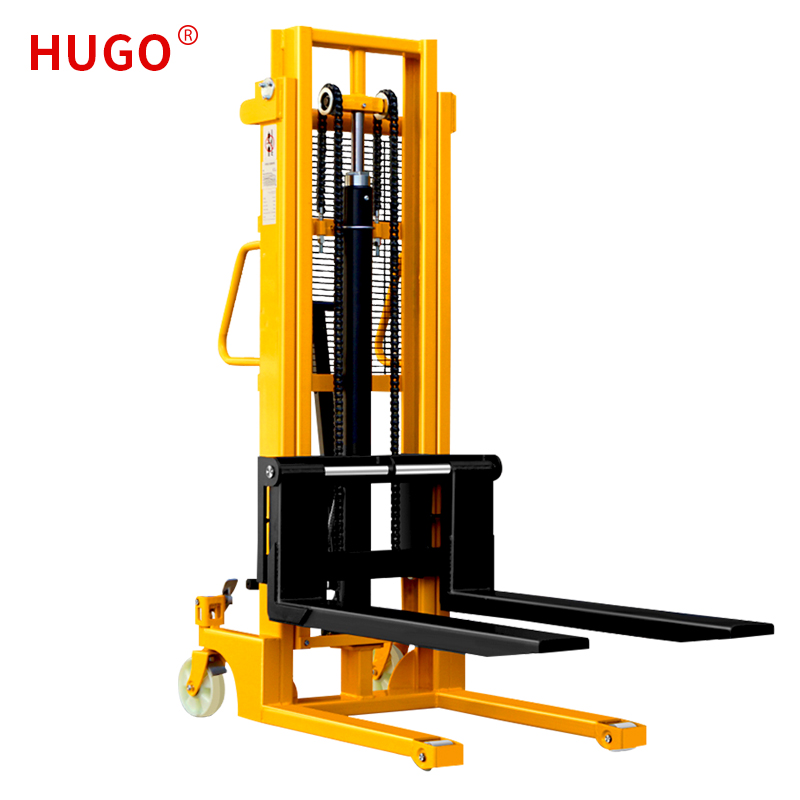
- English
- Español
- Português
- русский
- Français
- 日本語
- Deutsch
- tiếng Việt
- Italiano
- Nederlands
- ภาษาไทย
- Polski
- 한국어
- Svenska
- magyar
- Malay
- বাংলা ভাষার
- Dansk
- Suomi
- हिन्दी
- Pilipino
- Türkçe
- Gaeilge
- العربية
- Indonesia
- Norsk
- تمل
- český
- ελληνικά
- український
- Javanese
- فارسی
- தமிழ்
- తెలుగు
- नेपाली
- Burmese
- български
- ລາວ
- Latine
- Қазақша
- Euskal
- Azərbaycan
- Slovenský jazyk
- Македонски
- Lietuvos
- Eesti Keel
- Română
- Slovenski
- मराठी
- Srpski језик
What is the Lifting Principle of Manual Pallet Stacker?
2025-04-28
The lifting mechanism of manual pallet stacker relies on a composite system of hydraulic transmission and mechanical linkage to achieve vertical displacement of the load. As a human-driven storage and handling device, its core structure includes a bidirectional hydraulic pump, a lifting cylinder and a chain transmission assembly. The reciprocating motion of the operating handle drives the plunger pump to establish oil pressure. The hydraulic oil enters the cylinder through a one-way valve to push the piston rod to extend linearly. Through the meshing transmission of the top sprocket and the lifting chain, the linear motion is converted into the vertical lifting of the fork platform.

The mechanical locking device of manual pallet stacker controls the stroke height through the limit valve, and the safety relief valve blocks the pressure transmission under overload conditions. In the return stage, the control lever switches the oil circuit, so that the hydraulic oil flows back to the oil storage chamber under the action of gravity, and the fork descends steadily by its own weight. The guide roller system constrains the movement trajectory of the fork to prevent the risk of jamming caused by lateral deviation. The pressure maintenance system composed of sealing rings and wear-resistant bushings ensures the tightness of the hydraulic medium in long-term use.
The ergonomic principle in the structural design of the manual pallet stacker is reflected in the optimization of the lever ratio, and the operating torque of the manual pump is reduced by adjusting the fulcrum position. The symmetrical layout of the double-column frame disperses the stress distribution and enhances lateral stability. Self-lubricating bearings and low-friction surface treatment technology reduce movement resistance and improve energy conversion efficiency. The engineering reliability of the manual pallet stacker is based on the accurate calculation of the yield strength and fatigue life of the material, and its function depends on the effective coordination of the precision-matched mechanical transmission and hydraulic control unit.


